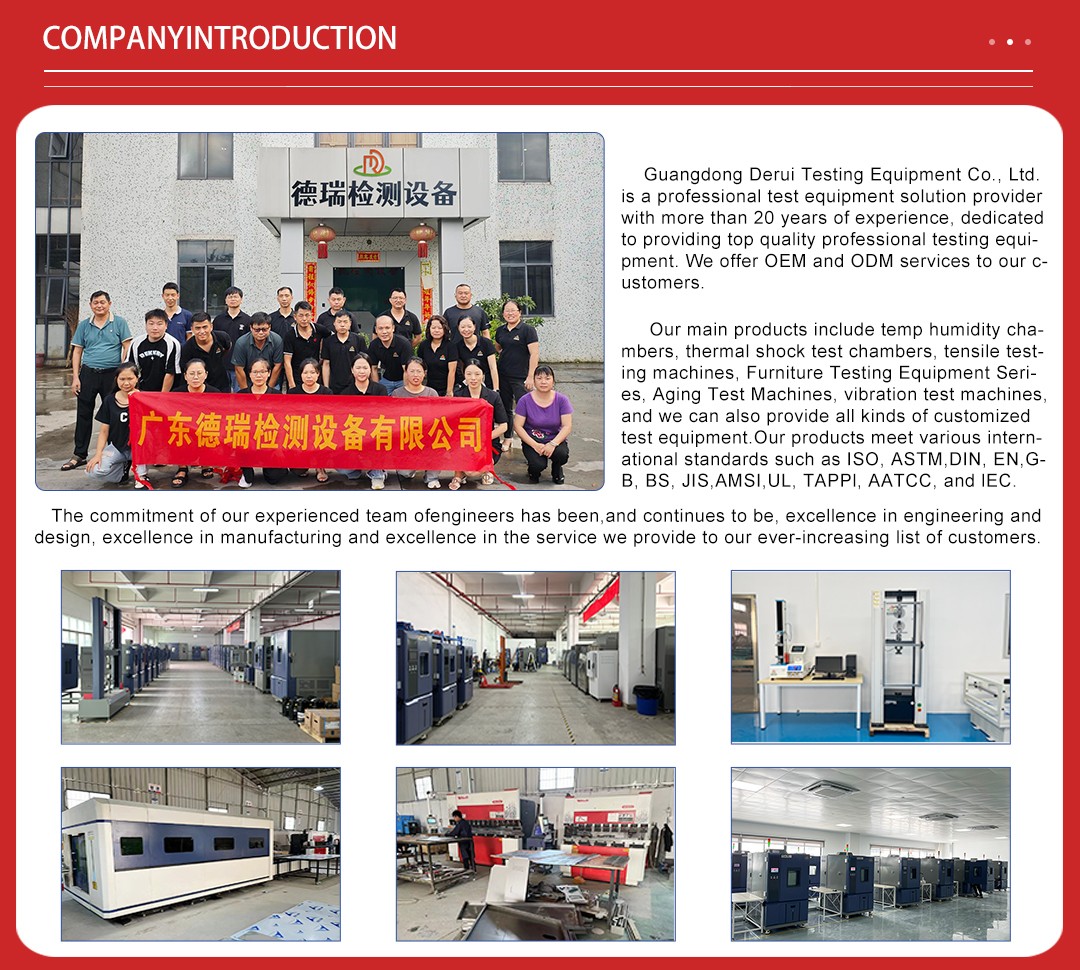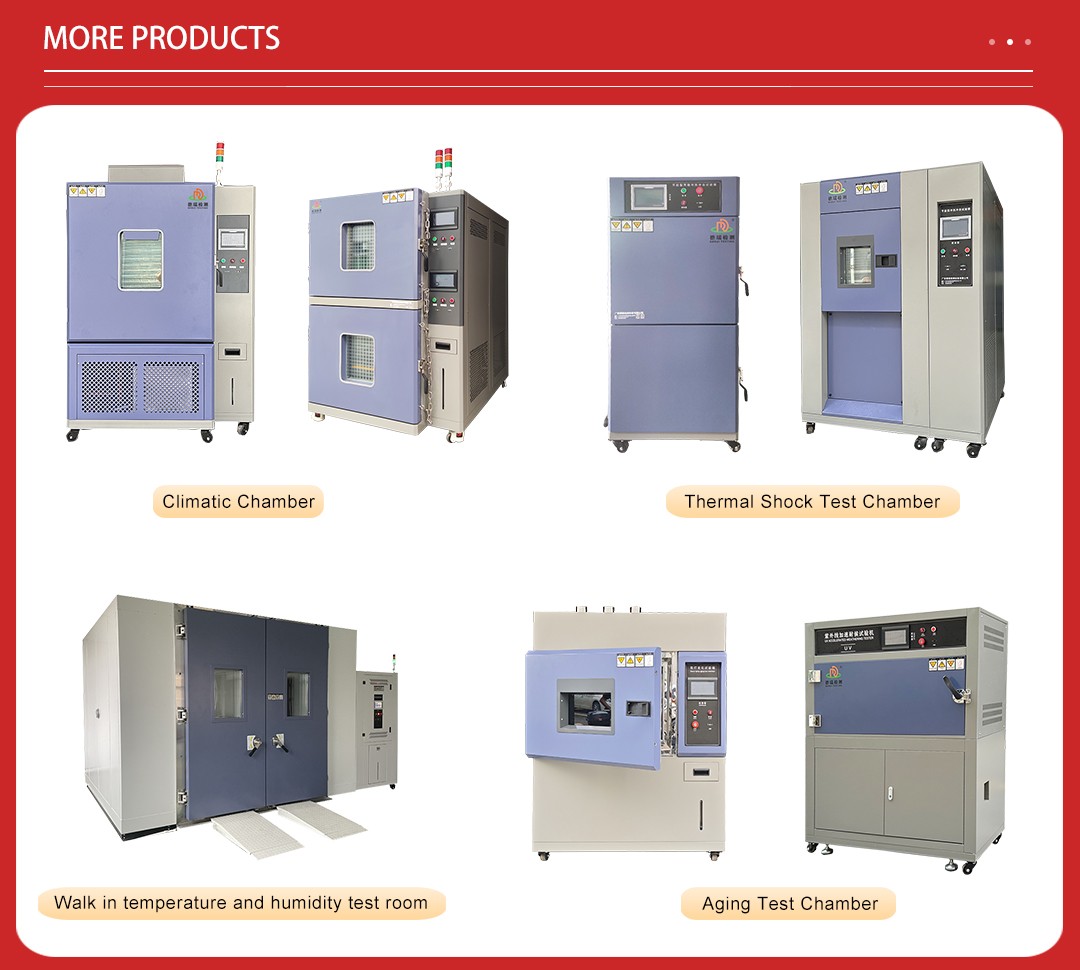
The premier UV chamber for aging plastics and coatings is a state-of-the-art device designed to simulate the effects of natural sunlight and environmental factors on these materials. This equipment is ...

The premier UV chamber for aging plastics and coatings is a state-of-the-art device designed to simulate the effects of natural sunlight and environmental factors on these materials. This equipment is crucial for evaluating the durability and longevity of plastics and coatings by exposing them to controlled, accelerated aging conditions.

The UV aging test chamber is extensively used in the aging of plastics and coatings to assess their resistance to degradation caused by ultraviolet (UV) radiation. This is particularly important for materials intended for outdoor use, where prolonged exposure to sunlight can lead to discoloration, loss of gloss, cracking, and other forms of deterioration.

Several international standards govern the testing of plastics and coatings, including:
1. ASTM G155: Standard practice for operating fluorescent ultraviolet (UV) and condensation apparatus for exposure of non-metallic materials.
2. ISO 4892: Plastics — Methods of exposure to laboratory light sources.
3. DIN 53387: Testing of color fastness; Xenon arc fading lamp test.

1. High-Intensity UV Lamps: Equipped with UV lamps that emit radiation in the wavelength range of 280-400 nm, simulating the solar spectrum.
2. Precise Environmental Control: Advanced systems to maintain specific temperature and humidity levels within the chamber.
3. Uniform Radiation Distribution: Ensures even exposure of UV radiation across all samples.
4. User-Friendly Interface: Easy-to-use controls for setting test parameters and monitoring progress.
5. Durability and Reliability: Designed to withstand prolonged operation without significant performance degradation.

1. The surface of the specimen from the lights from the nearest parallel to the surface: about 50mm
2. Wavelength range: UV-A wavelength range of 315 ~ 400nm
3. Within the radiation intensity 1W/m2/340nm
4. Temperature Resolution: 0.1 ℃
5. Light Temperature range: 50 ℃~ 70 ℃/ temperature tolerance of ± 3 ℃
6. Condensing temperature range: 40 ℃~ 60 ℃/ temperature tolerance of ± 3 ℃
7. Blackboard thermometer measuring range: 30 ~ 80 ℃/ tolerance of ± 1 ℃
8. Temperature control: PID self-tuning temperature control mode
9. Humidity range: about 45% ~ 70% R.H
10. Sink requirements: water depth less than 50mm, and a water supply automatic controller
11. Standard Specimen size: 75 × 150mm 48pcs
12. Recommended instrument environment: 5 ~ 35 ℃, 40% ~ 85% R • H, 300mm from the wall
13. Voltage: 220V ± 5%, single-phase three-wire, 50Hz, 10A, 15A GFCI requirements

Working Principle
The UV aging test chamber operates by exposing samples of plastics or coatings to intense UV radiation under controlled temperature and humidity conditions. The primary testing methods include:
1. Cyclic Tests: Alternating periods of UV exposure and condensation to simulate day and night cycles.
2. Continuous Tests: Uninterrupted UV exposure to accelerate the aging process.
Testing Process and Precautions
1. Sample Preparation: Ensure samples are clean and free from contaminants before placing them in the chamber.
2. Parameter Setting: Accurately set the desired UV intensity, temperature, and humidity levels.
3. Monitoring: Regularly monitor the test progress and record data using data loggers.
4. Safety Measures: Use protective gear and follow safety protocols to avoid exposure to UV radiation.
Data Analysis
Data collected from the UV aging test chamber can be analyzed to evaluate the performance of plastics and coatings. Key metrics include:
1. Color Change: Measured using colorimeters to assess discoloration.
2. Gloss Retention: Evaluated using gloss meters to determine the loss of shine.
3. Mechanical Properties: Tests for tensile strength, flexibility, and impact resistance.
Application Case Studies
1. Automotive Industry: Used to test the durability of exterior coatings and plastic components exposed to sunlight.
2. Construction Materials: Evaluates the long-term performance of building materials like roofing tiles and exterior paints.
3. Consumer Goods: Assesses the longevity of plastic products such as outdoor furniture and garden equipment.
The premier UV chamber for aging plastics and coatings is an indispensable tool in the field of materials science and engineering. It provides a controlled environment for evaluating the long-term performance of plastics and coatings under simulated natural conditions. By understanding the key features, applicable standards, working principles, and data analysis methods, users can effectively utilize this equipment to enhance the durability and reliability of their products.
Additional Considerations
1. Customization Options: The chamber can be customized to meet specific testing requirements.
2. Maintenance: Regular maintenance ensures the chamber operates at peak performance.
3. Training: Providing training for operators to ensure proper use and safety.
In summary, the premier UV chamber for aging plastics and coatings is a comprehensive and powerful tool for assessing the longevity and durability of these materials, ensuring they meet the highest standards of quality and performance.


Not search wanted products